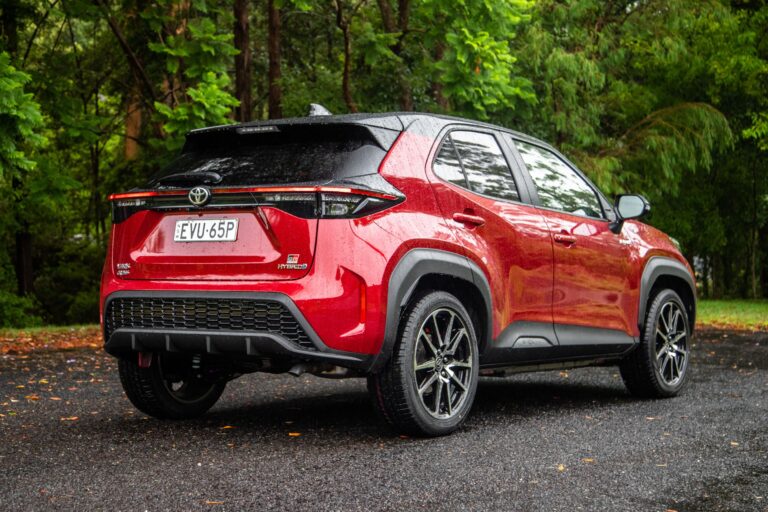Bulgarian Car Brands: A Journey Through Automotive Ambition and Innovation
Bulgarian Car Brands: A Journey Through Automotive Ambition and Innovation cars.truckstrend.com
When one thinks of global automotive powerhouses, names like Germany, Japan, and the United States often come to mind. Bulgaria, a nation nestled in the heart of the Balkans, might not immediately spring to mind as a hotbed of car manufacturing. Yet, beneath the radar of mainstream automotive history lies a fascinating, albeit complex, narrative of Bulgarian car brands. This article delves into the unique trajectory of Bulgaria’s automotive industry, from its socialist-era assembly lines to its modern-day niche ventures, exploring the ambitions, challenges, and enduring spirit of innovation that have shaped its vehicular landscape.
Defining "Bulgarian Car Brands" isn’t as straightforward as it might seem. It encompasses a spectrum from indigenous designs and prototypes to significant foreign assembly operations, and more recently, highly specialized, low-volume manufacturers. The story of Bulgarian automotive ventures is a testament to industrial aspirations, economic shifts, and the persistent ingenuity of its engineers and entrepreneurs. It reflects the broader socio-economic journey of the nation itself, making it a compelling subject for anyone interested in the lesser-known facets of global car production.
Bulgarian Car Brands: A Journey Through Automotive Ambition and Innovation
The Socialist Era: Assembly Lines and National Ambitions
The bulk of Bulgaria’s automotive production history stems from the socialist period, where the focus was primarily on commercial vehicles and the assembly of foreign passenger car models under license. The goal was to provide transport for the state and its citizens, often within the framework of Comecon (Council for Mutual Economic Assistance) agreements.
Chavdar: The Backbone of Bulgarian Transport
Perhaps the most recognized name from this era is Chavdar. Founded in 1924, Chavdar initially produced truck bodies and then expanded into licensed production of buses. While primarily known for its robust buses and trucks, which were ubiquitous on Bulgarian roads and exported to other socialist countries, Chavdar did harbor ambitions in passenger car production. Several prototypes, such as the "Chavdar 1300," were developed in the 1960s, showcasing local engineering talent. However, due to central planning directives and a focus on commercial vehicles, these passenger car projects never reached mass production.
Key Information & Challenges: Chavdar’s strength lay in its robust, functional designs suited for the often-challenging road conditions. Its production model was geared towards fulfilling state quotas rather than market demand. The major challenge was the lack of resources for independent research and development, forcing reliance on foreign licenses and limiting diversification into passenger cars.
Bulgarrenault: A Glimpse of Western Sophistication
A significant chapter in Bulgarian passenger car assembly began in 1966 with Bulgarrenault. This joint venture between the Bulgarian state and the French manufacturer Renault led to the assembly of popular Renault models, specifically the Renault 8 and Renault 10, in a factory near Plovdiv. This partnership was a crucial step in modernizing Bulgarian transport and provided citizens with access to relatively contemporary Western car designs, which were otherwise scarce.
Benefits & Challenges: Bulgarrenault brought modern production techniques and a touch of Western style to Bulgaria. It allowed for technology transfer and job creation. However, production volumes were limited (around 3,000 cars per year), and the venture was short-lived, ceasing in 1970 due to political and economic shifts within the Comecon bloc, which prioritized cooperation with Soviet and other Eastern European automotive manufacturers.

Pirin-Fiat: Expanding Car Ownership
Following the termination of Bulgarrenault, Bulgaria quickly established another partnership, this time with the Italian giant Fiat. Pirin-Fiat began assembly in 1967 at the same Lovech factory. Models like the Fiat 850 and Fiat 124 (which formed the basis for the Soviet Lada) were assembled, further expanding the availability of passenger cars in the country.
Significance & Considerations: Pirin-Fiat was instrumental in increasing car ownership in Bulgaria during its operational period (1967-1971). It continued the trend of bringing proven foreign designs to the domestic market. Similar to Bulgarrenault, it faced challenges related to limited production capacity, fluctuating supply chains within the socialist economic framework, and ultimately, the broader political decision-making that dictated such ventures.
Other Notables: Prototypes and Aspirations
Beyond these larger-scale operations, Bulgaria saw several smaller attempts and prototypes, such as the Sofia, a single prototype car from the 1950s that showcased early post-war engineering ambition. These projects, while never leading to mass production, underscored a persistent desire to develop an indigenous automotive industry.

The Post-Socialist Transition: Decline and New Beginnings
The fall of communism in 1989 brought profound changes to Bulgaria’s industrial landscape. The centrally planned economy collapsed, state-owned enterprises struggled with privatization, and new market forces emerged. Companies like Chavdar faced insurmountable challenges from international competition and outdated production methods, eventually leading to their demise by the late 1990s. The assembly plants from the socialist era, designed for a different economic reality, also ceased operations. For a period, Bulgaria’s automotive industry seemed to dwindle to little more than vehicle maintenance and parts distribution.
The Modern Renaissance: Niche Players and Global Partnerships
The 21st century has seen a fragmented but intriguing resurgence in Bulgarian automotive endeavors, characterized by foreign investment in assembly and the emergence of highly specialized, low-volume local manufacturers.
Litex Motors (Great Wall Motors Bulgaria): A Return to Mass Production

The most significant return to large-scale car production in post-communist Bulgaria came with Litex Motors. In 2009, Litex Motors, a Bulgarian company, partnered with China’s Great Wall Motors (GWM) to establish a full-cycle assembly plant in Lovech, the same city that hosted Bulgarrenault and Pirin-Fiat. Production began in 2012, marking the first time a Chinese car brand had a production base in the European Union.
Models & Significance: Litex Motors assembled GWM models like the Voleex C10 hatchback, Steed pickup truck, and Hover SUV. The plant aimed to serve both the Bulgarian domestic market and export to other European countries. This venture was significant as it brought modern, high-volume production techniques back to Bulgaria and created thousands of jobs.
Challenges & Current Status: Despite initial ambitions, the partnership faced challenges, including shifting European emissions regulations, GWM’s evolving global strategy, and intense competition. Production of passenger cars at the Lovech plant eventually ceased around 2017. While Litex Motors continues to operate, its focus has shifted away from mass-market car assembly, demonstrating the volatility of global automotive partnerships.
Kinetik Automotive: The Electric Hypercar Dream
Representing the pinnacle of modern Bulgarian engineering and design ambition is Kinetik Automotive. Founded in 2017, Kinetik Automotive is a cutting-edge company focused on developing and producing high-performance electric hypercars. Their flagship model, the Kinetik 07, is a stunning example of bespoke automotive artistry combined with advanced electric powertrain technology.
Philosophy & Significance: Kinetik Automotive embodies a philosophy of extreme performance, lightweight construction, and personalized luxury. It leverages Bulgaria’s growing talent pool in software and high-tech engineering. The brand showcases Bulgaria’s capability to compete in the highly exclusive and technologically advanced segment of electric hypercars, putting Bulgarian innovation on the global stage.
Considerations: As a niche, ultra-luxury manufacturer, Kinetik operates on a completely different scale than mass-market brands. Its success hinges on attracting a very select clientele and maintaining its edge in a rapidly evolving EV landscape.
Sin Cars: From Track to Road
Another notable modern Bulgarian brand is Sin Cars. Established in 2012 by former racing driver Rosen Daskalov, Sin Cars initially focused on producing high-performance track-day cars and racing vehicles. Their most recognized model is the Sin R1, which has competed successfully in various GT championships.
Evolution & Significance: Sin Cars has since diversified, offering road-legal versions of their sports cars and, more recently, venturing into electric vehicle development, including electric buses and commercial vehicles. This demonstrates an adaptability and a commitment to innovation beyond just high-performance sports cars. Sin Cars represents Bulgarian ingenuity in combining racing pedigree with practical automotive solutions.
Challenges: Like Kinetik, Sin Cars operates in a specialized, low-volume market. Expanding into new segments like electric commercial vehicles requires significant investment and navigating complex regulatory landscapes.
Key Considerations and Future Outlook for the Bulgarian Automotive Industry
The journey of Bulgarian car brands highlights several key aspects and offers insights into potential future directions:
Challenges:
- Lack of a Strong Domestic Supply Chain: Unlike established automotive nations, Bulgaria lacks a comprehensive domestic network of component manufacturers, making local production reliant on imports.
- Limited R&D Investment for Mass-Market Vehicles: Historically, there hasn’t been sustained investment in developing original mass-market Bulgarian vehicle platforms.
- Small Domestic Market: Bulgaria’s relatively small population limits the viability of large-scale production solely for internal consumption.
- Global Competition: Competing with established global automotive giants is a monumental task.
Opportunities & Practical Advice:
- Skilled Workforce: Bulgaria boasts a growing pool of skilled engineers, particularly in IT and software development, which are increasingly crucial for modern vehicles (e.g., autonomous driving, infotainment).
- Strategic Location: As an EU member with a strategic geographical position, Bulgaria could serve as a production or assembly hub for foreign manufacturers targeting European markets.
- Niche Markets: The success of Kinetik and Sin Cars demonstrates the viability of focusing on high-value, low-volume segments like electric hypercars, bespoke vehicles, or specialized commercial EVs.
- Attracting Foreign Investment: Bulgaria can position itself as an attractive location for foreign automotive companies seeking to establish manufacturing or R&D centers, perhaps focusing on components or software.
- Government Support: Policies that support R&D, provide incentives for foreign investment, and foster a robust educational system for engineering talent are crucial.
Bulgarian Car Brands: Overview Table
A conventional price table is not applicable for most Bulgarian "car brands" as many are historical assembly plants or defunct manufacturers. For current niche manufacturers like Kinetik Automotive and Sin Cars, prices are typically bespoke and in the high six-figure to multi-million dollar range, depending on customization, and are not publicly listed like mass-market vehicles. The table below provides an overview of their primary focus and market segment rather than specific price points.
| Brand/Entity | Period of Operation | Primary Focus/Notable Models | Status/Remarks | Market Segment (if applicable) |
|---|---|---|---|---|
| Chavdar | 1924 – 1999 | Buses, Trucks (some car prototypes like "Chavdar 1300") | Defunct. Major producer of commercial vehicles in Eastern Bloc. | Commercial (Buses/Trucks), Experimental (Cars) |
| Bulgarrenault | 1966 – 1970 | Assembly of Renault 8, Renault 10 | Defunct. Joint venture with Renault. | Passenger (Compact/Mid-size) |
| Pirin-Fiat | 1967 – 1971 | Assembly of Fiat 850, Fiat 124 | Defunct. Joint venture with Fiat. | Passenger (Compact/Mid-size) |
| Litex Motors (GWM) | 2012 – 2017 (cars) | Assembly of Great Wall Voleex C10, Steed, Hover | Ceased passenger car assembly. Focus shifted to other business. | Passenger (Compact, SUV, Pickup) – Mass Market (entry-level) |
| Kinetik Automotive | 2017 – Present | Kinetik 07 (electric hypercar) | Active, highly specialized, low-volume production. | Ultra-luxury, High-performance Electric Hypercar |
| Sin Cars | 2012 – Present | Sin R1 (sports car, racing car), electric commercial vehicles | Active, highly specialized, low-volume production. Diversifying into EVs. | High-performance Sports Car, Racing Car; Electric Commercial |
| Sofia | 1950s (prototype) | "Sofia" – single prototype car | Historical prototype, never mass-produced. | N/A (Experimental) |
Frequently Asked Questions (FAQ)
Q: Are there any mass-market Bulgarian car brands today?
A: No, there are currently no Bulgarian car brands producing vehicles for the mass market. The closest was Litex Motors (Great Wall Bulgaria), which assembled GWM cars until 2017. Modern Bulgarian brands like Kinetik Automotive and Sin Cars focus on niche, high-performance, or luxury segments.
Q: What was the most significant period for car production in Bulgaria?
A: The socialist era (roughly 1960s-1980s) saw the most significant volume of car assembly, primarily through joint ventures like Bulgarrenault and Pirin-Fiat, and the production of commercial vehicles by Chavdar.
Q: Does Bulgaria export cars?
A: Historically, assembled vehicles (like some GWM models from Litex) were exported. Currently, niche manufacturers like Kinetik Automotive and Sin Cars aim for international markets for their specialized vehicles.
Q: Were Bulgarian-made cars reliable?
A: Vehicles assembled in Bulgaria during the socialist era (e.g., Renaults, Fiats) generally maintained the quality standards of their foreign counterparts, albeit with limitations related to local supply chains and production scale. Chavdar buses and trucks were known for their robustness and reliability in their intended commercial roles.
Q: What is the future of car manufacturing in Bulgaria?
A: The future likely lies in specialized niche production (like electric hypercars or unique commercial EVs), attracting foreign investment for component manufacturing, and leveraging Bulgaria’s strong IT sector for automotive software and R&D. Mass-market production of a "Bulgarian car" is less probable.
Q: Are Kinetik and Sin Cars truly "Bulgarian" brands?
A: Yes, both Kinetik Automotive and Sin Cars are founded and based in Bulgaria, with Bulgarian engineering and design at their core. While they might use internationally sourced components (common in the automotive industry), their brand identity, vision, and core operations are Bulgarian.
Concluding Summary: A Story of Resilience and Evolution
The history of Bulgarian car brands is a compelling narrative of a nation’s enduring industrial spirit. From the utilitarian buses of Chavdar and the accessible passenger cars assembled under socialist-era partnerships with Renault and Fiat, to the ambitious but ultimately transient mass-market venture with Great Wall, Bulgaria has consistently sought its place in the automotive world.
Today, the landscape is defined by the emergence of highly specialized, visionary brands like Kinetik Automotive and Sin Cars, demonstrating a shift towards high-value, technologically advanced niches. While Bulgaria may never become a global automotive giant producing millions of cars annually, its journey showcases resilience, adaptability, and a quiet determination to innovate. The story of Bulgarian car brands is a unique testament to how a nation, even without the traditional automotive pedigree, can contribute to the diverse tapestry of global vehicular innovation.




